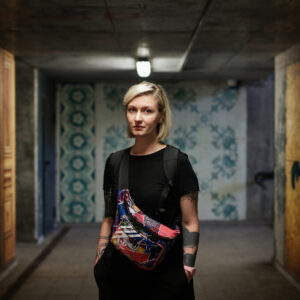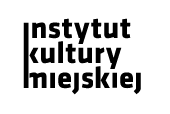Martyna Jastrzębska, The Absenting, 2023, installation
Until the 1960s, the Orunia Park featured a stone sculpture of a female figure. According to local legend, it depicted the so-called Lazy Maiden: a housemaid named Magdalena who, owing to her lack of diligence, was turned into a statue. The sculpture was gradually vandalised, until it disappeared completely. Were we to believe another urban legend, it was buried in an unknown location. What Martyna Jastrzębska distils from this seemingly inconspicuous narrative still makes people’s blood boil and causes discussions: matters of class, gender and power, the story of a woman punished for “being lazy” and rebelling against the predetermined, top-down order.
At the centre of the installation, inside a military-style tunnel tent, the artist places an object that reveals what others have attempted to hide. The persona emerging from the installation, along with the figurative elements, create a joint shape resembling a rock, although most of the visible fragments would be hard to ascribe to specific bodies or objects. Yet, as the artist explains, in this arranged excavation, the true treasure appearing from the ground is to give visibility to what has previously remained absent. “I want to invite the audience into a space that eludes clear-cut designations of time and place,” says Jastrzębska. “I advocate for the manifestation of what has been marginalised and removed from the space we live in. You will not bury all of us.”
MARTYNA JASTRZĘBSKA (she/her) is a visual artist mainly working with objects and installations. Her practice revolves around themes of transience, transformation and rebirth, reinterpreting the meaning of traces, as well as deconstructions of myths and symbols. Jastrzębska was an artist-in-residence at NES Artist Residency Iceland (2017) and the Centre of Polish Sculpture in Orońsko (2023). In 2022, she received a three-year Minister’s Scholarship for Eminent Young Scholars. Her works are included in private collections, the Collection for the New Century of PKO Bank Polski, and the contemporary art collection of the National Museum in Gdańsk.



